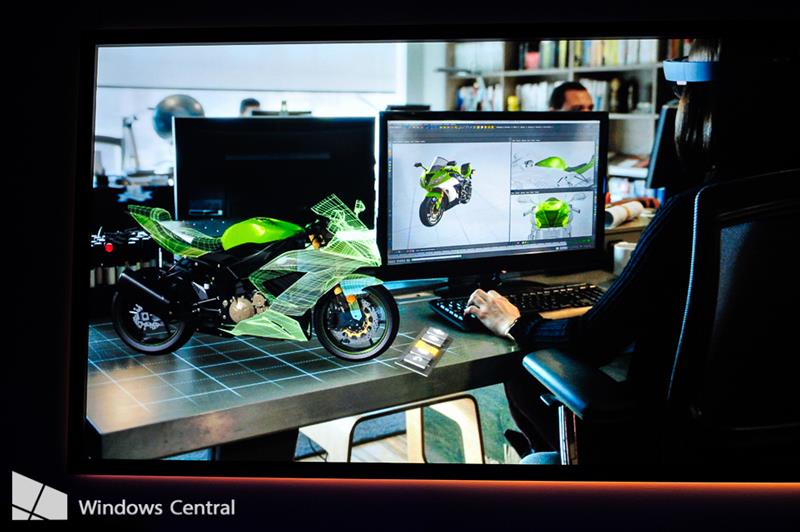Windows 10 will introduce holographic computing

Holograms. You know, those shiny light things that are real, but not real, but everyone wants one from the movies? They're here. Sort of. Microsoft dedicated a section of its Windows 10 event to talk to the audience about holograms. "Make it so simple that technology would just disappear."
Microsoft is going beyond virtual reality and will attempt to surpass the likes of Google Glass and Oculus Rift, inviting developers who follow said solutions to build new content for the platform. It's not about placing the user into a virtual world, but integrate Windows 10 content on home and work surfaces.
All that's required is the Microsoft HoloLens. This headwear will enable wearers to manipulate models and other content, place instructional cues on real life objects, place a screen on the wall (view Netflix without turning on the television), access an interface into a virtual world and more. While they're not technically holograms (this isn't Tron... yet), it's an interesting step for Microsoft.
Some applications where this can prove to be useful include construction and architecture design, medicine and surgery, video gaming (of course!) and more. Every Windows 10 device will have APIs built in, both large and small devices. Better yet, holographic apps are universal, meaning all universal apps on Windows 10 can be made holographic.
All the latest news, reviews, and guides for Windows and Xbox diehards.

Rich Edmonds was formerly a Senior Editor of PC hardware at Windows Central, covering everything related to PC components and NAS. He's been involved in technology for more than a decade and knows a thing or two about the magic inside a PC chassis. You can follow him on Twitter at @RichEdmonds.
